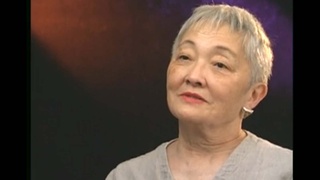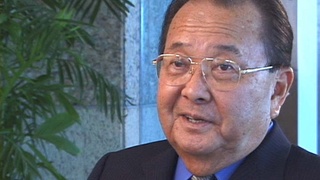Interviews
Her experience of Japanese American Evacuation
We were evacuated in April from Burbank. We were all on the north side of the street of Los Feliz. People there were all in Burbank, and then from the south side, I think they went to where the horse track was, Santa Anita. And you know, I was thinking how do we get there, I think it was by bus. It wasn’t a train, it was a bus. In those days we were still young and it was war. We didn’t know what war was. I know it was something dangerous but that was about it. We just did the best we could, you know? That was it.
Date: May 24, 2011
Location: California, US
Interviewer: John Esaki
Contributed by: Watase Media Arts Center, Japanese American National Museum
Explore More Videos

No immediate impact after Pearl Harbor
(b. 1928) Doctor. Former Chair of the Japanese Canadian Redress Foundation.

Treatment of Japanese fishermen in Canada during World War II
(b. 1928) Doctor. Former Chair of the Japanese Canadian Redress Foundation.

Government's permission to publish Japanese newspaper in Canada during World War II
(b. 1928) Doctor. Former Chair of the Japanese Canadian Redress Foundation.

Japanese newspaper supported by Canadian government during World War II
(b. 1928) Doctor. Former Chair of the Japanese Canadian Redress Foundation.

Sneaking out of the Hastings Park camp during World War II
(b. 1928) Doctor. Former Chair of the Japanese Canadian Redress Foundation.

Government urged Japanese Canadians to go to Japan
(b. 1928) Doctor. Former Chair of the Japanese Canadian Redress Foundation.


Closing the Japanese school and deportation (Spanish)
(b. 1932-2016) Peruvian painter





Attempts to sign up for military service
(1917 - 2004) Political activist


